Homepage > GMAT IR and AWA > GMAT Analytical Writing Assessment tips – How to score a perfect 6 on GMAT AWA

GMAT Analytical Writing Assessment tips – How to score a perfect 6 on GMAT AWA
Posted by Suheb Hussain | Aug 6, 2020 | GMAT Focus Edition , GMAT IR and AWA , GMAT Preparation

The GMAT Analytical Writing Assessment (AWA) section measures your ability to analyze an argument and communicate your thoughts or ideas. What you simply need to do is to critically analyze the reasoning given behind a given argument. To complete the AWA section of the GMAT you are allotted 30 minutes.

Here is the outline of the article:
How to create a well rounded Analytical Writing Assessment essay?
- How does ‘GMAT Write’ analyze your AWA essay?
GMAT AWA tips – GMAT Analytical Writing Assessment Template
- Sample GMAT Analytical Writing Assessment essay
Let’s discuss now how you can score a perfect 6 on the GMAT Analytical Writing Assessment section. Here are a few tips to prepare you for the GMAT AWA section.
Step 1 – Understand the process of creating a well-rounded analysis of an argument. You can do that in two ways or rather with the help of two tools.
- AWA template by Chineseburned from gmatclub
Step 2 – Practice! Practice! Practice! the AWA questions. Here is a list of practice questions for you.
GMAT Write – An AWA practice tool by GMAC
GMAT Write is a writing tool provided by GMAC. It gives you access to 2 unique essay prompts and a chance to write 4 essays. The good thing about this tool is that it scores your essay based on the scoring algorithm used by the official GMAT exam. But, it costs $29.99 to subscribe to this tool.
Take a look at this article to know the importance of AWA and IR sections for business school admissions.
How does the ‘GMAT Write’ analyze your GMAT AWA essay?
Once you submit an essay, it scores you on 4 categories:
- Analysis of the issue
- Supports ideas
- Organizes coherent idea
- Language control
Based on these 4 categories it gives you an overall score for the essay.
Even if you don’t buy this tool, you still get to know what GMAT considers an ideal essay to be from it. An ideal essay should:
- Identify and analyze significant flaws in the argument
- Support the critique using relevant supporting reasons and/or examples
- Be a clearly organized and coherent response
- Demonstrate control of language, including diction, syntax, and conventions of standard written English
Source: https://www.mba.com/exam-prep/gmat-write
Once you know what factors make a perfect essay, the next thing you should do is creating a template. The most popular template for AWA is the one provided by ‘Chineseburned’ user on the gmatclub forum.
If you are planning to take the GMAT, we can help you with a personalized study plan and give you access to quality online content to prepare. Write to us at [email protected] . We are the most reviewed GMAT prep company on gmatclub with more than 1950 reviews. Why don’t you take a free trial and judge for yourself?
Here are the details of his template:
Structure of the essay
- Introduction: Restate the argument and point out the flaws. Now, state your views which you’ll discuss in the next paragraphs.
- First paragraph: State your first critique of the argument and support your view with an example.
- Second paragraph: State your first critique of the argument and support your view with an example.
- Third paragraph: Pose a few questions for the argument. The absence of information in the argument to answer your questions weaken it further.
- Fourth argument: State information that you feel would have strengthened the argument but is absent. (This is an extra paragraph which is not in Chineseburned template)
- Conclusion: State that the argument is flawed because of the above reasons and which reasons could have strengthened the argument.
Learn how the IR section is scored.
Sample GMAT Analytical Writing Assessment AWA essay
Here is a sample AWA essay question for practice. We have also provided the answer to this question based on the template.
The following appeared in an Excelsior Company memorandum. “The Excelsior Company plans to introduce its own brand of coffee. Since coffee is an expensive food item, and since there are already many established brands of coffee, the best way to gain customers for the Excelsior brand is to do what Superior, the leading coffee company, did when it introduced the newest brand in its line of coffees: conduct a temporary sales promotion that offers free samples, price reductions, and discount coupons for the new brand.” Discuss how well reasoned you find this argument. In your discussion, be sure to analyze the line of reasoning and the use of evidence in the argument. For example, you may need to consider what questionable assumptions underlie the thinking and what alternative explanations or counterexamples might weaken the conclusion. You can also discuss what sort of evidence would strengthen or refute the argument, what changes in the argument would make it more logically sound, and what, if anything, would help you better evaluate its conclusion.
GMAT AWA essay
The Excelsior company wants to introduce its own brand of coffee since coffee is an expensive food item and might have good profit margins. However, as there are several established brands of coffee already, it needs to work out a way to gain a foothold in the market. For this purpose, the company plans to pursue the same marketing strategy that the leading coffee company Superior had used. However, I think there are several flaws in that line of reasoning. And hence this argument seems a little weak.
First, Superior is already an established brand and the market leader. No data is given as to how long back it entered the coffee market. Without this information, it is difficult to ascertain the utility of the marketing strategy for Excelsior. A brand might take decades to establish, and what worked a decade back, need not work today. For example, when Google was initially set up, it depended on word of mouth, rather than any communication media, for its marketing. As it was initially just an internal product for the University, this approach worked for them. However, it might not work for any company now. We see these days that most new web companies do advertise heavily when they initially launch a product for the masses.
Second, no information has been provided about the target market for the coffee or the pricing strategy. It might be that the coffee produced by Superior is one of the cheaper products in the market. And that they earn their profits from volume sales rather than having a niche market. Whereas, Excelsior might be aiming at the niche market of expensive and luxury coffee. If that were the case, then the same marketing strategies might not be relevant for Excelsior. Can Hyundai apply the same approach towards the market as does a luxury brand like Ferrari?
Without some of the relevant and contextual details, it is difficult to judge the efficacy of using the same marketing strategy that a competitor applied some unknown years back. If we were to get some more details in this regard, we could have judged the situation better.
Although all the factors being the same, it might not be a bad idea to follow the same approach as that of a leading brand in the market. Sometimes there is nothing wrong with sticking to the tried and the tested. In the absence of any other better idea, Excelsior might not have much to lose if it pursues the same methods as did Superior. It’s better to have some plan rather than no plan.
Conducting a temporary sales promotion that offers free samples, price reductions and discount coupons might not be such a bad idea. It could be a good ploy to get users to try out the product. And discounts and other monetary incentives are usually very effective in this regard. If the quality of the product is good enough and the pricing is appropriate, introducing enough customers to the product through such offers might give a significant push to consumer interest in the product. While customer satisfaction might leverage word of mouth marketing.
Therefore, depending on the context the approach might or might not be a beneficial one. This essay question has been taken from gmatclub and the answer has been judged as a perfect 6 by the GMAT Write tool. The answer was written by the user ‘rish2jain’ from gmatclub forum.
To score a perfect 6 on the GMAT Analytical Writing Assessment section, it is important that you learn the AWA template and practice as much as you can. Just don’t overdo it. It is a good practice to devote 10% of your preparation time to GMAT Analytical Writing Assessment section.
About The Author

Suheb Hussain
Don't limit yourself, don't miss these.
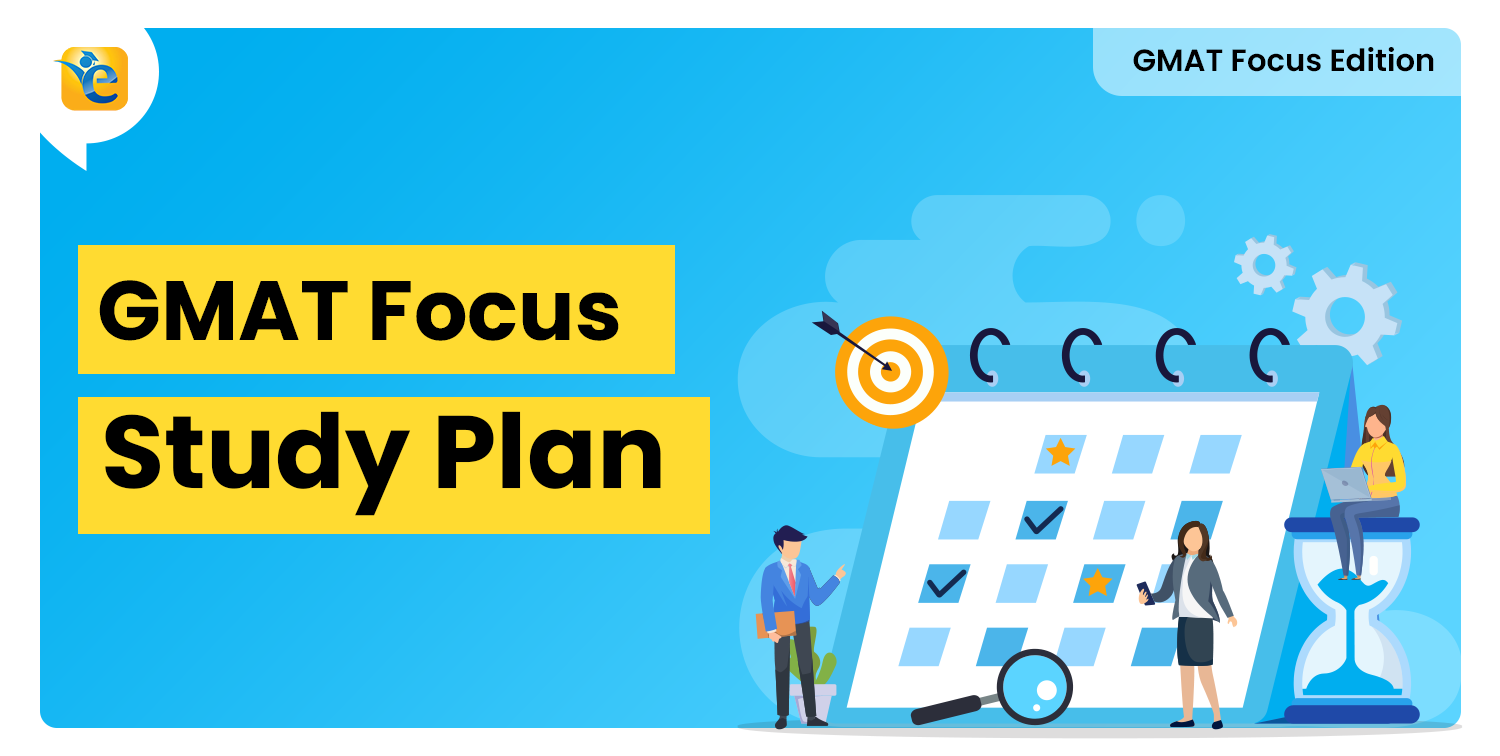
Helpful posts Curated just for you!

You might also like

Browse Related Topics

Achieve 685+ on the GMAT in 30 days!
Sign up for our free trial and get.
400+ Practice questions with detailed solutions
10+ hours of ai-driven video lessons, adaptive mock test with osr+ analysis.
Begin your GMAT Prep today!
Save 10% on All AnalystPrep 2024 Study Packages with Coupon Code BLOG10 .
- Payment Plans
- Product List
- Partnerships

- Try Free Trial
- Study Packages
- Levels I, II & III Lifetime Package
- Video Lessons
- Study Notes
- Practice Questions
- Levels II & III Lifetime Package
- About the Exam
- About our Instructor
- Part I Study Packages
- Part I & Part II Lifetime Package
- Part II Study Packages
- About your Instructor
- Exams P & FM Lifetime Package
- Quantitative Questions
- Verbal Questions
- Data Insight Questions
- Live Tutoring
- EA Practice Questions
- Data Sufficiency Questions
- Integrated Reasoning Questions

GMAT Analytical Writing Assessment
Also called the GMAT Essay, the Analytical Writing Assessment(AWA) overall is a single task, which is to evaluate an argument. You will have a total of 30 minutes to consider the argument, write your essay, and finally proofread your essay. It can either be the first or final sections in your variable exam order; that is, you can either begin with the AWA, followed by the integrated section, then go to the quantitative and verbal reasoning sections, or you can start with the quantitative and verbal reasoning sections first, then follow it with the integrated reasoning section and finish with the AWA.
The essay is scored independently on a 0 – 6 scale of ½ point increments. You will have two independent graders, one of which may or may not be a computer program, but they will never deviate by more than one point. That means that if one of them gives you a 4 and the other gives you a 5, then you will have a 4½.
How does the AWA compare with the other GMAT sections?
The AWA is always going to be the least important section of the GMAT for admissions considerations. You should consider the GMAT essay exam as a de facto truffle exam, which is an English as a foreign language requirement exam, and basically, it is there to guarantee proficiency in the written English language. In theory, if someone without English language proficiency was to write an essay in their native language, for example, and have someone translate it, then the admissions office cannot be aware of that. But for the GMAT essay, whoever is writing the exam has to prove their identity and write the essay in 30 minutes without any assistance.
How does the AWA affect your GMAT score?
Your goal here is to hit a 5-point minimum. 5 or higher, which is just about the 55th percentile is a safe target score, sometimes even a 4½ could be safe, but a 4 is going to put you at about the 20th percentile because of the scoring system. So, to be safe, you really must do your best to guarantee a five-point score or higher in your essay. If you execute the tactics and processes discussed in this article, you should be able to produce a relatively well-written level 5 essay.
As a GMAT test taker, you must decide beforehand whether it suits you to treat the essay and integrated sections as warmups and therefore do them first, or you prefer to do the quantitative and verbal reasoning sections first before you handle the IR and AWA as a cooldown.
Static Essay Task
Discuss how well-reasoned you find this argument. In your discussion, be sure to analyze your line of reasoning and use the evidence in the argument. For example, you may need to consider what questionable assumptions underlie the thinking and what alternative explanations or counterexamples might weaken the conclusion. You can also discuss what sort of evidence would strengthen or refute the argument, what changes in the argument would make it more logically sound, and what, if anything, would help you better evaluate its conclusion.
Now that you have read the essay task, it may never change, and you may never have to read it again. All you have to do is get familiar with this essay task as part of your GMAT exam preparation, and on test day, you will know exactly what to do.
How should I address the essay task?
Think of it as a long-form critical reasoning evaluation task. Evaluate the reasoning, do not attack the reasoning or offer alternative reasoning. Basically, stay on task.
The first thing you always have to do is identify the main claim conclusion, recommendation, or opinion requiring evaluation.
Read the paragraph or two carefully and understand what the main claim or specific conclusion is. You must be careful not to “attack” the argument, so avoid pejorative hyperbole. For instance, don’t say how terrible the argument is, how completely unfounded it is, or that kind of extreme judgment. There certainly are some flaws, but you need to be measured in your response.
Investigate ways in which additional information pertaining to possible assumptions could both damage or improve the claim. That is, you don’t only want to point out the problem with the argument as it is presented but also give possible solutions. Suggesting solutions illustrates a true understanding of the circumstances in the argument and different pieces of augmentation and generally show an overall understanding of what is happening in the prompt. This is basically what the examiners are looking for to attain the roughly ten percentile score of 6.
Avoid using outside information or personal biases in your evaluation.
Stick to the prompt, and don’t go outside of it. One of the major ways you can deviate from the task and get yourself into the danger zone of below 5 is by going off on a tangent and talking about things that you are assuming everybody knows. If you get a topic that you are particularly familiar with, make sure that you are not using information that is not available to your grader. Your grader is probably someone who is going to read the paragraph in two to five minutes and probably has a checklist to ensure that you accomplish all the goals. If it is a computer program, it is probably going to be even more streamlined. So stay on topic, don’t deviate, and don’t include possibilities, personal biases, or outside information. Use only the information that you have been provided.
Can I finish the Analytical Writing Assessment section in 30 minutes?
Start with 3 – 5 minutes of brainstorming. In the brainstorming, you need to identify the main conclusion in need of evaluation. You also need to identify major issues within the argument that would affect the viability of that conclusion. For example, is the sample size too small? Identify as many different issues as you can find that need to be further evaluated as per the task to determine the viability of the conclusion.
Spend the next 22 – 25 minutes writing your essay. Assume a standard four-paragraph structure: An introduction, a first support paragraph, a second support paragraph, and a conclusion. It is not necessary to have a fifth paragraph; in fact, it is best that you don’t have a fifth paragraph here so that you have enough time to Proofread your essay.
Spend 2 – 3 minutes proofreading your essay. It is important that you catch any major errors in logic. It is very possible in these 30 minutes of essay writing to entirely leave out a sentence that was in your mind and is integral to what is happening in your essay. You also have to include things like what is your actual conclusion, don’t just refer to it obliquely as “the conclusion” over and over. Your essay grader can’t just assume that you know what the conclusion was.
Fix convoluted phrasing. If English is not your first language, you can probably just streamline and cut out extra words. This exam does not give any extra points for the length of the essay, so streamline, use an active voice, and be direct, concise, and clear.
Vary your word choice slightly.
Samples Essay Prompt
The following appeared as part of the annual report sent to stockholders by Olympic Foods, a processor of frozen foods: “Over time, the costs of processing go down because as organizations learn how to do things better, they become more efficient. In color film processing, for example, the cost of a 3-by-5-inch film fell from 50 cents for a five-day service in 1970 to 20 cents for a one-day service in 1984. The same principle applies to the processing of food. And since Olympic Foods will soon celebrate its 25th birthday, we can expect that our long experience will enable us to minimize costs and thus maximize profits.”
Sample Brainstorming
The first thing you have to do is identify the main conclusion. You can paraphrase slightly but not much because, basically, we are just short-handing.
Main conclusion : Since OF(Olympic Foods) will soon turn 25, it can be expected that the experience will minimize costs and maximize profits!
You can put this directly into the word processor interface because you can write around it as you are brainstorming. Focus on the conclusion and try not to pick any of the evidence. Being disinterested and unbiased with the evidence will help us identify possible issues or assumptions. For example:
- Is the analogy to color processing apt? Is there anything similar between Olympic Foods and color film processing? Don’t make a value judgment and say, “absolutely not.” You just ask the question, and the task is to seek out the answer.
- Another inherent assumption that you may have to investigate is, does minimizing cost means that we will maximize profits? If the cost drops, does that mean that revenue does not go down as well?
- Do 25 years qualify as long experience? The color processing analogy cites the period between 1970 and 1984, a duration of 14 years. So, according to this prompt, is 25 years adequate to be considered long experience?
- Is the annual report possibly a biased source? It is from a report to stockholders by Olympic Foods and has a very positive outlook of Olympic Foods; might it be biased? Should we consider another source?
- Because the principle applies in theory, does it necessarily work in practicality? Do we need more information to say if it can work in practicality or not?
All this you need to do in under 5 minutes.
Take notes in the word processor interface for maximum efficiency.
Choose the top three topics or issues to evaluate in your essay. There is not enough time to go through everything, so just streamline into the big three.
Here we’ll go with:
- Is the analogy to color processing apt?
- Do 25 years qualify as long experience?
- Is the annual report possibly a biased source?
This is a personal decision, but you have to make it proactively so that you are extremely consciously writing your essay.
Essay structure
1. introduction (paragraph 1).
Start by identifying your main conclusion. Don’t skirt it, don’t overly paraphrase it, or refer back to it as “the conclusion, the claim, or the recommendation”. Sometimes the conclusion is a bit convoluted and complex, and your essay grader checks to see if you specifically understood the conclusion. It is also here that you will be previewing your top three issues you need to evaluate and transition into the primary issue you are going to evaluate, say; for instance, let’s say the main issue here is the aptness of the color processing analogy.
2. Primary Issue (paragraph 2 )
Briefly summarize your primary issue and how it affects the viability. Be straightforward and do not include too many details. It should be self-explanatory since you are not using external information that needs further exposition. Recommend some additional information sources and how the results of that information might improve or decrease the viability of the claim. For instance, it is possible that we find out that there are a lot of ways that color processing is similar to food processing, which will strengthen the claim. Make sure to address the pro side as well and not only the cons.
Finally, transition into the second most pertinent issue that you are going to evaluate.
3. Second Issue (paragraph 3 )
Briefly summarize the issue and how it affects the viability. Recommend some additional information sources and how the results of that information might improve or decrease the viability of the claim. You can consider some vague hypotheticals that could improve or decrease the viability of the claim. If, for example, you are considering age, that is, is 25 years long enough to be considered experienced? You could ask, “What if there are primary competitors with more than 100 years of experience?” And what if the competitors have significantly fewer years of experience?
In this case, you are not really bringing in outside information, you are just considering hypotheticals. This is a better way to go about it than driving yourself into a rabid hole of too many specifics which you may not be able to determine within the context of the prompt. Keep it simple while trying to achieve a breadth of coverage on several different topics. Transition into the third most pertinent issue in need of evaluation.
4. Conclusion (paragraph 3)
Briefly mentioned any additional issues that may need to be evaluated. The possible bias would be a good one to drop in here. You could, for example, just point out that the source for this is the Olympic Foods stockholder report. Is this a disinterested unbiased source? Is there somebody else that would agree with this report?
You can then close by restating the main claim of the argument as uncertain pending results of seeking additional information regarding the issues identified in the essay. That is to say, without answers to the issues raised, we don’t really know the truth of the claim.
Do not shy away from writing in the first person. Just pick a person and stay consistent with it. You can write as “I” or “We”, you can write in the third person; it is completely okay either way, so long as you remain consistent.
Analytical Writing Assessment Process
Brainstorm. (3.5 minutes).
- Read the paragraph to identify the main conclusion to address the static task.
- Identify the three top issues or assumptions affecting the conclusion’s viability
Write Essay. (22 – 25 minutes)
Make it a basic four-paragraph structure: An introduction, two paragraphs of support, and a conclusion. Try to allocate new information for the conclusion. Having a more robust organization and cohesion in your essay are some of the things that will edge you closer to 5.5 or 6 in your AWA.
Make sure to leave enough time to catch major errors and vary word choices slightly. The downside to not proofreading is much bigger than the upside of using the final two or three minutes to write another two or three sentences.
Try applying this approach to your GMAT Analytical Writing Assessment. Pull up some prompts and do some practice in preparation for your GMAT exam.
Additional prompts are available at:
https://www.mba.com/ ~/media/Files/mba2/the-gmat-exam/files/gmat-exam-format-and timing/analytical-writing-assessment/analysisofanargument_gmat-exam.pdf.
Remember, it takes practice to excel in any exam. Therefore, as you prepare to sit for your GMAT exams, don’t forget to practice with real questions. You can take advantage of our GMAT study resources available at a small premium. Find out what we have to offer and boost your confidence by practicing adequately.
Offered by AnalystPrep
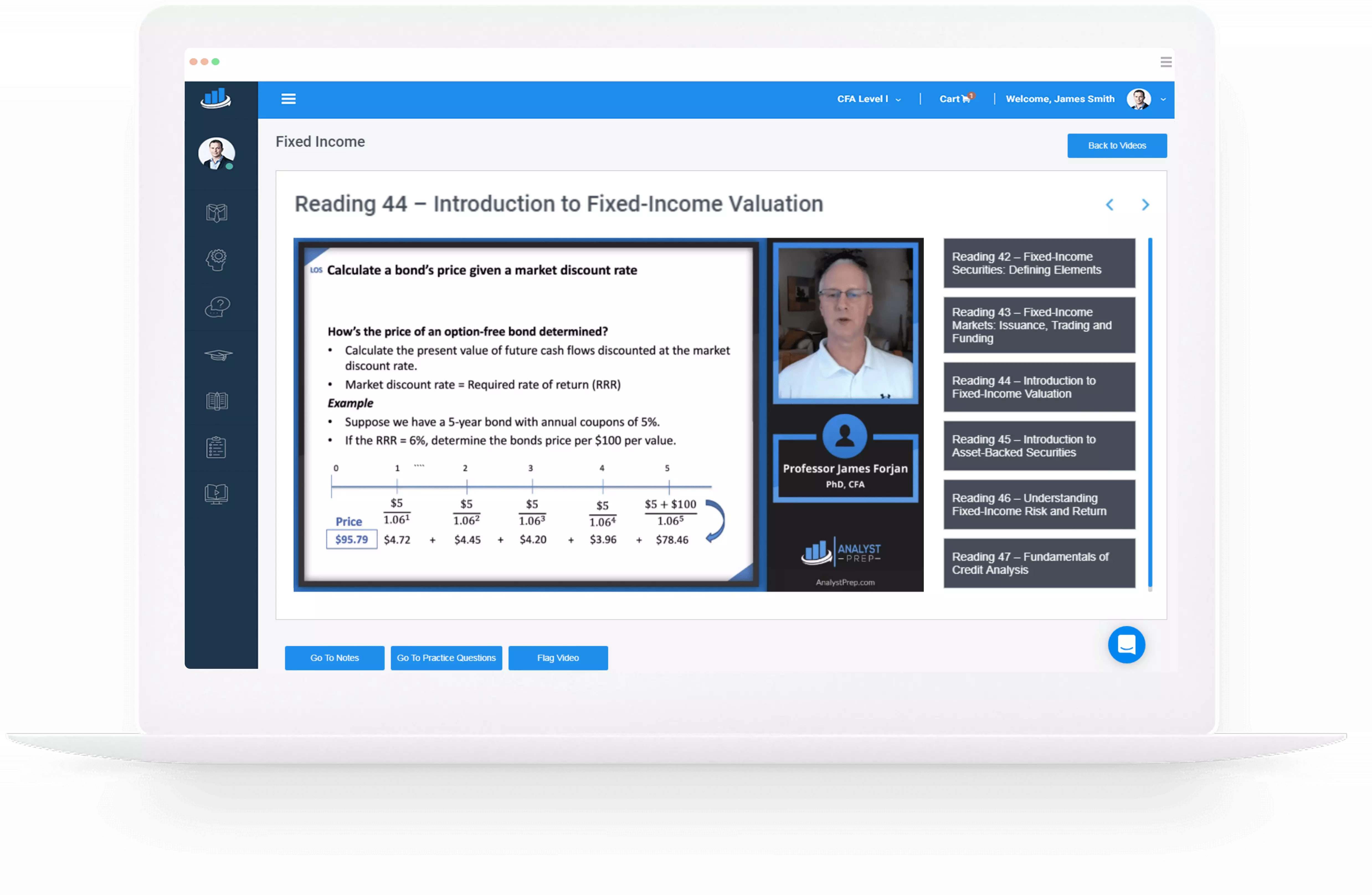
GMAT Integrated Reasoning: Multi-Source Reasoning
Gmat sentence corrections: sentence structure, different career options for financial ....
A financial analyst is a general term used to describe various job titles... Read More
Is it Possible to Postpone my CFA® Ex ...
You need to fulfill specific criteria and appeal directly to the CFA Institute... Read More
What are the Differences Between CFA® ...
Congratulations on passing level I and level II CFA exam. However, you have... Read More
When is the Best Time to Enrol in CFA� ...
If you are considering a career in finance, earning a CFA charter is... Read More
Enjoy this post? Rate it!

GMAT AWA (Analytical Writing Assessment) | A complete guide
Ever wondered how a 30-minute essay can influence your path to business school and future career discover the significance of the gmat awa (analytical writing assessment) section, from its scoring metrics to essential tips for success. keep scrolling to learn more, table of contents, introduction, what is gmat awa , scoring metrics , first impressions matter , a test of your communication skills , critical thinking , pattern for gmat awa , factors to consider , structure is key , time management , vocabulary and style , key takeaways .
If you’re preparing for the GMAT , you’ve likely heard about the Analytical Writing Assessment (AWA). This section may not be the first thing on your mind, but it plays a significant role in your overall performance. The GMAT AWA section tests your ability to think critically and communicate your ideas.
So, how important are the AWA scores, and what exactly is the GMAT AWA task? This guide will answer these questions and provide actionable tips for GMAT analytical writing.
The GMAT AWA, or Analytical Writing Assessment in GMAT, is more than just a writing task – it measures your ability to think critically and articulate your thoughts. You have 30 minutes to write an essay that analyzes an argument presented to you. The topics can vary, but they all require you to dissect an argument rather than give your personal opinion.
The GMAT AWA section is scored separately from the Quantitative and Verbal sections and has a score range from 0 to 6. The scoring is done in half-point increments. Two independent readers evaluate your essay, focusing on the quality of your analysis and the clarity of your writing.
Why is GMAT AWA Important?
There are a few reasons why the AWA GMAT section plays a vital role if you are considering getting admitted to a top business school.
When it comes to business school applications, first impressions are crucial. Your GMAT AWA score is often the first piece of academic information that admissions committees see. A strong performance in this section can set a positive tone for the rest of your application.
In the business world, the ability to communicate effectively can make or break deals. The GMAT AWA section serves as a testament to your ability to convey complex ideas in a clear and effective manner. It’s not just about writing well; it’s about making your points logically and persuasively.
Critical thinking is a skill beyond the classroom and is highly valued in the business world. The GMAT AWA section is designed to assess this skill by requiring you to analyze an argument rigorously. Your ability to identify logical flaws or assumptions in the argument can demonstrate a level of critical thinking that admissions committees find appealing.

Introduction to the GMAT AWA Task
The GMAT AWA task differs from your typical essay assignment. Unlike other writing tasks where you might be asked to take a stance, here, your job is to critique an argument. You’re not expected to agree or disagree but to dissect the argument’s logic. This is a nuanced task that tests both your analytical skills and your ability to communicate complex ideas.
- Read the prompt: The first step is to read the argument presented thoroughly. Take a couple of minutes to understand its structure and the points it’s trying to make. This will form the basis of your critique.
- Plan your essay: Before you start writing, jot down the key points you want to cover. Outline your essay into sections like the introduction, body, and conclusion to ensure a coherent flow of ideas.
- Write: Stick to a clear structure when writing. Your introduction should outline what the argument is and what you plan to discuss. The body should delve into the details of your analysis, and the conclusion should summarise your points and suggest areas where the argument could improve.
- Review: Remember to consider the power of a final review. Spend the last few minutes going through your essay to correct any grammatical errors and to ensure your argument flows logically.
Several factors are to be considered when preparing for the GMAT AWA, as the scores of this section are not only looked at by the schools you apply to but also by different sectors such as-
- Business Schools: Business schools have different criteria; some may emphasize AWA scores more than others. It is crucial to research your target schools’ specific requirements regarding GMAT AWA scores.
- Scholarships: A strong GMAT AWA score can sometimes tip the scales in your favor when it comes to scholarship decisions. Scholarships are competitive, and every point on your GMAT score can make a difference.
- Employment: While the GMAT AWA score is primarily for academic purposes, don’t be surprised if future employers, especially in consulting or roles that require robust communication skills, take a look at your AWA scores.
Tips for GMAT Analytical Writing
So, you’ve got a handle on what the GMAT AWA section is all about. Now comes the part where you need to put that knowledge into practice. Here are some tips for improving your performance in GMAT analytical writing.
- Introduction: Your introduction should serve as a roadmap for your essay. Start by paraphrasing the argument presented in the prompt. Clearly state what aspects of the argument you’ll be discussing. This sets the stage for your analysis.
- Body: The body of your essay should be divided into paragraphs, each focusing on a different aspect of the argument. Whether it’s a flaw or a strength, discuss it in detail, providing evidence to support your analysis.
- Conclusion: Your conclusion should be more than just a summary of what you’ve discussed. It should offer insights into how the argument could be improved or what aspects are as strong as they are. This shows a depth of understanding and analytical ability.
- Planning: Before you dive into writing, spend around 5 minutes planning your essay. This initial investment of time can make the writing process much smoother.
- Writing: You have 20 minutes for the actual writing. Stick to the structure you’ve planned and keep an eye on the clock. Time can fly when you’re engrossed in writing.
- Review: The last 5 minutes should be reserved for revising and proofreading. Even the best arguments can be undermined by simple errors, so take advantage of this step.
- Be clear: Jargon and complex sentences can muddle your argument. The goal is to communicate your analysis as clearly as possible. Simplicity often trumps complexity when it comes to clarity.
- Be concise: Long-winded explanations can lose the reader. Get to the point and stay focused on your argument. Every sentence should serve a purpose.
- The GMAT AWA section is a 30-minute essay task that tests your ability to analyse an argument critically.
- Your AWA score is often the first academic metric that admission committees see.
- The GMAT AWA task requires you to critique an argument, not to give your opinion.
- Avoid overcomplicating your essay, straying from the prompt, and making grammatical or spelling errors.
The GMAT AWA section might seem like a small part of the GMAT exam, but it holds significant weight. From showcasing your critical thinking to your ability to communicate, the AWA section is more than just an essay, it’s a snapshot of your potential. So, give it the attention it deserves, and you’ll be well on your way to achieving it.
If you have any doubts or questions regarding GMAT AWA or any study abroad test preparations, please drop your queries in the comments section below, or feel free to contact us to connect with our experts.
Like this article? Read next: GMAT retake exam | Policy details & strategies to score well
Q1. How is the AWA GMAT section scored?
Ans- The AWA GMAT section is scored on a scale of 0 to 6 in half-point increments.
Q2. Is the AWA GMAT score included in the overall GMAT score?
Ans- No, the AWA score is separate and is not included in the overall GMAT score, which ranges from 200 to 800.
Q3. How can I improve my AWA GMAT score?
Ans- Practice makes perfect. Regularly practicing under timed conditions can help you get a better grasp of the section.
How useful was this post?
Click on a star to rate it!
Average rating 0 / 5. Vote count: 0
No votes so far! Be the first to rate this post.
People also liked

IELTS success| Tips to master each section

Importance of IELTS grammar | Tips and tricks

TOEFL and IELTS | Role of contextual & academic words
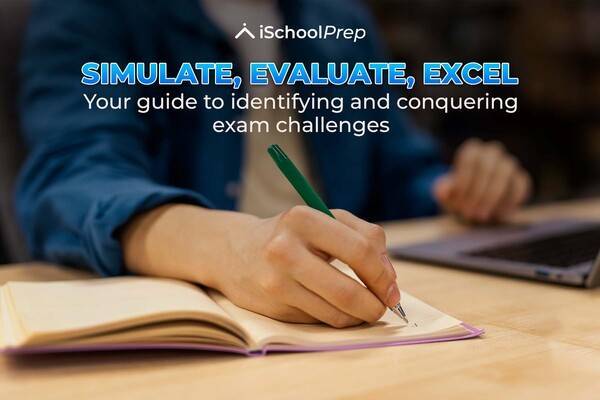
Simulated tests | Opportunity to overcome challenges

TOEFL, IELTS, & GRE exam structure | Key differences 2024!

Ace the GMAT exam | Navigate quant & verbal difficulties!
Leave a reply cancel reply.
Your email address will not be published. Required fields are marked *
Please enter an answer in digits: ten + fifteen =
Start your journey with iSchoolPrep
Need help with your Test Preparations? Contact Us for more details
Inquire Now
Get e-books, expert guidance, live classes and more....
GMAT Analytical Writing: All About the GMAT Essay and How to Prepare For It

Yup, the rumors are true: you’ll encounter a 30-minute GMAT analytical writing section on test day. But while analytical writing can seem tough at first, finding out exactly what’s expected and how to attack it for a maximum score will do a lot to make the GMAT essay feel manageable! In this post, we’ll take a look at what you need to know to master the GMAT AWA.
Table of Contents
Introduction to gmat analytical writing, what to expect for gmat analytical writing, scoring for gmat analytical writing.
- How to Approach the GMAT AWA (Strategy and Tips)
Breakdown by Section
Example gmat essays, gmat awa and business school.
You may be thinking: why on earth would the GMAT even want to test my writing skills? In the modern global business world, you will always have contacts whom you know primarily through writing (email, reports, publications, etc.). Similarly, many people important for your advancement will meet you the first time through your writing. You need to be able to make a strong first impression in your writing, through the arguments you present.
On your GMAT writing assignment, the test will present an argument, often in the context of a newspaper editorial or the statement of a company. The nature of this argument will generally allow you to argue for either side, and the side you choose does not affect your score. You will have 30 minutes to read the prompt and construct your essay. Later, your essay will be graded by both a computer and a person on a scale of 0 to 6; your AWA test score will be an average of these two scores.
Don’t forget the main purpose of this task: to measure your GMAT analytical writing skills. This means that whether you argue for or against the argument, your job is to analyze the argument. You’ll need to consider questions such as:
- What are the assumptions of the argument, and how strong are they?
- What sort of facts would strengthen or weaken the argument?
- Are there alternative explanations or perspectives that would explain the facts in question better?

Both the computer and the human reviewer are looking for particular elements in a good GMAT AWA essay. In short: a successful Analysis of an Argument essay will be clear and cogently argued; it will present the individual critiques in a logically consistent order; it will identify all the points in need of consideration, and it will use word choice and variety of syntax to effectively communicate.
A lot of students wonder: Are spelling, grammar, and punctuation important on the GMAT analytical writing? Will they make or break your score? They are pretty important—luckily, your GMAT SC correction practice will serve you well in this regard. But you can’t leave these elements up to chance: practice correcting your essays (more on this below), and always, always leave a few minutes at the end of the section to proofread your essay.
Remember, you’ll only have 30 minutes for the entire essay. This means that, while you’ll spend the bulk of your time actually writing, you should still set aside around 3-5 minutes at the beginning of the task for planning, then leave another 3-5 minutes at the end to read over and make minor corrections to what you’ve written. These seemingly small actions can have a big impact on your score! But practicing—and following the instructions—is key to mastering the pacing here.
AWA Directions
Throughout the GMAT, knowing the directions ahead of time gives you an edge because you don’t have to spend time reading them on test day. This advantage is compounded on the AWA test section because the instructions are substantial: it’s a lot to read, so it’s that much less to read on test day. Moreover, the “post-argument” paragraph enumerates skills that will be important to practice and master, so you walk into test day armed and ready with your “analysis toolbox” prepared.
With that in mind, here are the directions that precede every AWA argument task:
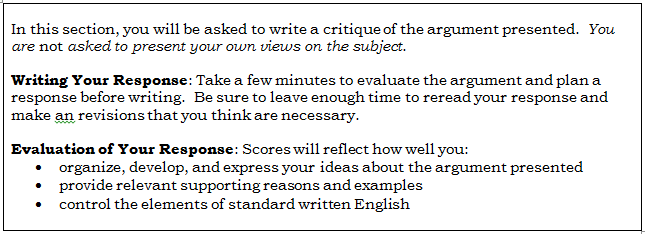
The first bullet point tells us: a good AWA essay is well-organized, has a natural flow from point to point, and is clear and unambiguous about what it is saying. Those are all important points to keep in mind.
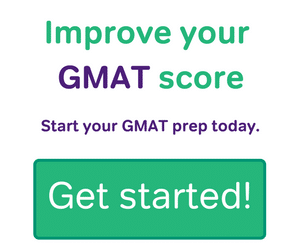
The second bullet point reminds us: what they present will be, in all likelihood, a flawed argument, but what you must create is a cogent and clear argument, and that will necessarily involve providing clear and relevant support. It’s not enough simply to assert something badly: you must provide justification for what you are saying.
The final bullet points may appear enigmatic: “control the elements of standard written English.” What does that mean?
Well, first of all, it means no grammar or syntax mistakes . It also means varying the sentence structure —some simple sentences (noun + verb), some with two independent clauses (noun + verb + and/but/or + noun + verb), some with dependent clauses, some with infinitive phrases, some with participial phrases, etc. Finally, it means choosing the right words and the right tone : the tone should be skeptical toward the prompt argument and persuasive toward the points you are making, but not arrogant or dogmatic in any way.
The following paragraph always appears after the argument prompt. This is the real meat-and-potatoes of the AWA directions:

First of all, notice it give you one clear task: “Be sure to analyze the line of reasoning and the use of evidence in the argument.” Then, it lists several strategies that you might employ in your analysis. Don’t feel compelled to use every one of these in every AWA essay, though you should be using most of them in most essays.
If you’ve only taken standardized tests like the ACT or the SAT before, you may find AWA scoring slightly strange. GMAT Analytical Writing affects your overall score differently than essays on other exams do. With that in mind, let’s take a look at what a good GMAT analytical writing score on the GMAT is, as well as how important AWA test scores are to your overall GMAT score.
The GMAT Analytical Writing Scoring System
First, let’s get an important point out of the way: The AWA test score does not affect your overall GMAT score . Instead, it’s included as a separate category on your score report.
Although you won’t have an exact breakdown of your scores for each element, the GMAT analytical writing assessment is looking at your abilities in roughly four categories:
- Quality of Ideas
- Organization
- Writing Style
- Grammar and Usage
Based on your overall work, you’ll receive a score from 0 to 6, in half-point increments.
So just who decides where your essay falls within each of these four categories? First of all, a computer does. This is a bit surprising to most students when they first learn about it—after all, how can a computer evaluate something as subjective as writing? Well, remember that you’re not being scored on poetry here. Instead, the computer looks at the organization, syntax, and analytical aspects—things the GMAT algorithm is pretty good at doing.
Then, a trained evaluator will score the essay based on the general development of your ideas and written expression. The GMAT then averages these scores into your overall AWA score. Don’t worry about huge discrepancies in scores between the human and the computer graders, though: if the scores have more than a one-point difference, another human grader comes in to help set the final score.
GMAT AWA Percentiles
If you’re wondering, for example, how a GMAT analytical writing score of 4.5 compares to other test-takers’ scores, you’ll want to look at the GMAT AWA percentiles . GMAC regularly updates this information so that you can see what percentage of previous test-takers received each score.
How to Score Your Practice GMAT Essays
Scoring your own GMAT writing can be a little bit like trying to scratch your own back: it’s hard to see exactly where you are. But it can be done! By breaking down each component of your sample AWA essay, grading it, and averaging those grades, you can get some idea of your strengths and weaknesses. Magoosh even has a GMAT AWA scoring rubric you can use for this purpose.
How to Approach the GMAT AWA
Once you know what to expect from GMAT analytical writing, it’s time to start implementing strategies that will help you maximize your score on this section. Keep coming back to these throughout your GMAT prep to ensure that you’re staying on track and pushing your GMAT writing to the next level!
Strategies for the AWA
Here are the tips that will support your success on the GMAT’s AWA:
- Recognize Unstated Assumptions : Recognizing assumptions is essential for the Critical Reasoning questions, and it will also serve you well on attacking the prompt argument in your AWA.
- Know the Directions : This a matter not only of knowing what they say but also, more importantly, understanding the various options you have for analyzing the argument. This list of analytical strategies is always given in the paragraph that follows the prompt argument. It’s important to get familiar with this “analytical toolbox”, so it is yours to employ on test day.
- Recognize the Common Flaw Patterns : GMAT AWA prompt arguments often contain one of six types of flaws . Learn to spot these patterns, so you are ready on test day.
- Plan Before You Write : This is obvious to some test-takers. Your first task is to find objections to and flaws in the prompt argument. Create a list of flaws. Then, select the 2-4 of those that are most relevant, that would be the most persuasive talking points. Once you have your list of insightful flaws, then you are ready to write.
- Paragraph #1: State that the prompt argument is flawed. Briefly enumerate the flaws you will examine, in the order that you will discuss them.
- Paragraph #2 (or #2 & #3): Sticking to that same order, analyze each flaw in detail, explaining your reasoning why each is a serious weakness of the argument.
- Last Paragraph: Suggest improvements, which are the reverse of the flaws (i.e. “This argument would be considerably stronger if it did such-and-such to remove flaw #2.”). Close by restating that is it a weak argument.
- Simple sentence, one independent clause: Jack went to town .
- Sentence with two independent clauses: Jill went to town and Jack stayed home . (Two independent clauses can be joined by “and”, “or”, “but”, “yet”, “so”, etc.)
- Sentence with an independent clause and one (or more) dependent clauses: Jack went to the town where Jill lives .
- Sentence with an infinitive phrase: Jack went to that town to see Jill .
- Sentence with a participial phrase: Hoping to see Jack, Jill went to town .
A good essay should not have two sentences in a row with the same structure.
- Vague Language: The words “few”, “many”, “more”, “less”, and “some”, by themselves without numerical qualification, can be vague. Always consider the range of possibilities contained in vague words comparing quantity or size.
- Inappropriate Comparisons: This form presents a premise and conclusion for Thing #1, which is often quite clear and undisputable. Then, it argues, Thing #2 is very similar, so the premise and conclusion should apply to Thing #2 as well. Depending on the situation, the comparison may not be apt, and pointing out Thing #2 differs from Thing #1 in ways relevant to the argument can expose an essential flaw.
- Cause/Effect Errors: Many arguments want to make the case that “A causes B.” Whenever the argument “A causes B” is presented, some alternative interpretations to consider are (1) the reverse, “B causes A”; or (2) “A and B are both caused by new thing C”, or (3) “A and B, for a variety of reasons, often appear together, but one does not cause the other.” (This last interpretation is summed up succinctly in the sentence: “Correlation does not imply causality.”) Learn to spot arguments that draw conclusions of causality, and questions whether that’s the correct relationship.
- Overconfident Conclusions: Confidence = good. Overconfidence = bad. If you read the NY Times or the Wall Street Journal or the Economist magazine, you will notice the kind of tone the GMAT favors: thoughtful, balanced, and measured. Extreme conclusions are seldom correct on the GMAT. Any AWA prompt that presents a conclusion with God-given certainty is too strong, and this is a flaw that needs to be addressed.
- Proofread! Proofread! Proofread! : When you proofread, you have to consider several levels simultaneous: Is every word spelled correctly? Is every structure grammatically correct? Does the argument logically flow? Unfortunately (or fortunately!) you are not allowed to read your essay aloud in the testing center. What I do recommend, though: silently mouth the words, as if you are carefully pronouncing each word, even though you are not making any sounds. When you move your mouth & tongue, you are engaging more of your brain than when you are simply reading silently with your eyes, and you are more likely to catch subtle mistakes.
Those AWA test tips are all important to keep in mind for your GMAT writing. But when you actually sit down at the computer on test day, what should you do? Here’s the process to use to get the most out of your 30 minutes with the GMAT AWA, including a more in-depth GMAT writing template!
By the time you sit down on test day, you should have read the directions to the AWA (they’re posted above—take another look!), so you won’t need to waste time reading them again. Instead, dive straight into AWA brainstorming . As you brainstorm, list the argument’s flaws; then evaluate those flaws to find which objections are the strongest.

Write an Introduction
You don’t need to reinvent the wheel with each GMAT AWA introduction . Start by stating where the passage is from. Then, focus on two main tasks: summarizing the argument and stating why it’s flawed. Keep it short and sweet; three sentences are enough to get your main points set up!
Construct Your Body Paragraphs
These will make up the lion’s share of your essay, so you’ll spend most of your time writing body paragraphs. Here’s how to go about doing that:
- Identification: Focus on a Premise: The first thing you will need to do in your paragraph is to identify what part of the argument you intend to analyze. The best way to do this is by simply summarizing the premise in the argument. You can state that it is flawed at this point, but it is not necessary. You’ll have plenty of time to do that, and the reader already knows what will happen from what you told them in the introduction. Paraphrase, summarize, and use synonyms to present the premise—don’t copy word for word—and this is a great way to lay the groundwork for your analysis.
- State the Obvious: Flaws Hurt Arguments : This is a common step skipped in student essays. We must return to the larger picture. Students assume that everything will make sense once the flaw is exposed, but this is far too brash. We can’t just expect our reader to “get it.” We need to speak plainly and directly about how the flaw weakens the argument, and more specifically, the recommendation, plan, or conclusion of the argument. Not all flaws weaken arguments in the same way so be specific about what aspect of the conclusion is questionable.
- Do Good: Improve and Strengthen the Argument : Now that you’ve taken the time to analyze the argument, break down a flaw, and explain the result of that flaw to the conclusion, time to build it back up. Approach the essay as a concerned and interested party, responding to the argument with sympathy. Don’t just be destructive. Give suggestions for improvement. And if you don’t like the conclusion, peer into the heart of what it is trying to accomplish and recommend a way to get there.
Conclude the Essay
First of all, keep in mind that you should not dwell in the conclusion. The heart of your essay, what really matters toward your score, is in the body paragraphs. These should be bulky and in-depth, but the conclusion should be short and to the point. Wrap things up in a timely manner so that you can get to the business of editing and revising your essay.
To keep things manageable and short, don’t go into the details. You only need to recap the major problems in the argument. Sometimes it is enough to say that there are major problems in the argument. Ignore the desire to repeat all the main points that you covered in the body paragraphs. This will only take extra space and waste precious time.
Finally, recommend a way to achieve the goal stated in the article. It is important to approach the analysis of the argument as an interested party. You don’t want to be wholly negative. For one, you will write a better analysis if you imagine yourself tied to the argument in some way, and two, the prompt asks you to strengthen the argument. Find some general evidence that will make the argument more convincing or make it irrefutable. Suggest a change so that the logic stands on firmer ground.
A GMAT analytical writing sample essay, whether well done or flawed in itself, can help you polish your own GMAT writing and bring your essays to the next level. The important part of reviewing example GMAT essays is in analyzing them (and expert analysis is even more helpful, particularly at the beginning).
Where can you find sample GMAT analytical writing prompts? Easy! The GMAC (the GMAT test-maker) actually provides all possible AWA essay topics on their website. So if you need examples of analytical questions for the GMAT , look no further!
So just how important are the AWA scores for business school admissions? We certainly could argue that the GMAT Analytical Writing score is not so important. It’s undeniable that the Quantitative sections and Verbal sections, which contribute to the overall GMAT score, are considerably more important than the separate GMAT writing score . Arguably, the fact that the AWA section was “cut in half” when IR was added in 2012 is a further indication of the relative importance of the GMAT essay and its score.
It’s true that Business school adcoms rely on the Quant, Verbal and Composite scores significantly more than the GMAT writing score. In fact, recent evidence suggest that adcoms also rely on the IR score significantly more than the GMAT essay score.
But while it’s true that, in your GMAT preparation , Quant and Verbal and even IR deserve more attention than the AWA, it’s also true you can’t completely neglect AWA. The difference between a 5 or 6 as your GMAT Analytic Writing score will not make or break a business school admission decision, but having an essay score below a 4 could hurt you.
The purpose of the AWA is to see how well you write, how effectively you express yourself in written form. This is vital in the modern business world, where you may conduct extensive deals with folks you only know via email and online chatting. Some of your important contacts in your business career will know you primarily through your writing, and for some, your writing might be their first experience of you. You never get a second chance to make a first impression, and when this first impression is in written form, the professional importance of producing high-quality writing is clear.
While you don’t need to write like Herman Melville, you need to be competent. A GMAT Analytic Writing score below 4 may cause business schools to question your competence. That’s why it’s important to have at least a decent showing in AWA.
For Non-Native English Speakers
In particular, if English is not your native language, I realize that this makes the AWA essay all the more challenging, but of course, a solid performance on the AWA by a non-native speaker would be a powerful testament to how well that student has learned English . Toward this end, non-native speakers should practice writing the AWA essay and try to get high-quality feedback on their essays.
Devoting 30% or more of your available study time to AWA is likely unwise, but devoting 0% to AWA might also hurt you. Between those, erring on the low side would be appropriate. If, in a three-month span, you write half a dozen practice essays , and get generally positive feedback on them with respect to the GMAT standards, that should be plenty of preparation.
The GMAT analytical writing can feel like a slog when you first encounter it: it requires deep focus and analysis, and it’s not what most students have spent their prep time working on. But with a bit of preparation, your GMAT essays can take your admissions file to the next level by boosting your AWA test score significantly!
By including GMAT writing in your overall GMAT prep schedule, you’ll ensure that this section of the test doesn’t become a drag on your application—and helps, rather than hurts, your shot at your dream school. Good luck!

Rachel is one of Magoosh’s Content Creators. She writes and updates content on our High School and GRE Blogs to ensure students are equipped with the best information during their test prep journey. As a test-prep instructor for more than five years in there different countries, Rachel has helped students around the world prepare for various standardized tests, including the SAT, ACT, TOEFL, GRE, and GMAT, and she is one of the authors of our Magoosh ACT Prep Book . Rachel has a Bachelor of Arts in Comparative Literature from Brown University, an MA in Cinematography from the Université de Paris VII, and a Ph.D. in Film Studies from University College London. For over a decade, Rachel has honed her craft as a fiction and memoir writer and public speaker. Her novel, THE BALLERINAS , is forthcoming in December 2021 from St. Martin’s Press , while her memoir, GRADUATES IN WONDERLAND , co-written with Jessica Pan, was published in 2014 by Penguin Random House. Her work has appeared in over a dozen online and print publications, including Vanity Fair Hollywood. When she isn’t strategically stringing words together at Magoosh, you can find Rachel riding horses or with her nose in a book. Join her on Twitter , Instagram , or Facebook !
View all posts
More from Magoosh
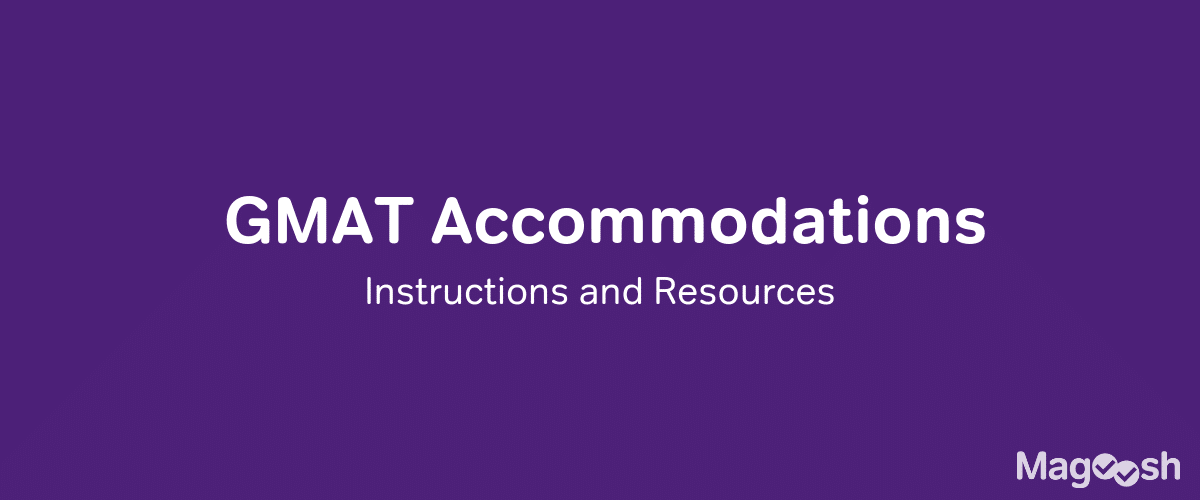
Leave a Reply Cancel reply
Your email address will not be published. Required fields are marked *
- E-mail & Password
- Notification Settings
- Global Settings
- Applicant profile
- Update status
- My GMAT info
- --> My Education -->